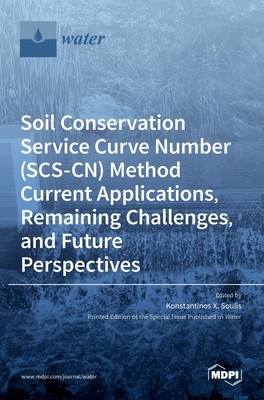
- We will send in 10–14 business days.
- Publisher: MDPI AG
- ISBN-10: 3036508201
- ISBN-13: 9783036508207
- Format: 17 x 24.4 x 1.6 cm, hardcover
- Language: English
- SAVE -10% with code: EXTRA
Soil Conservation Service Curve Number (SCS-CN) Method Current Applications, Remaining Challenges, and Future Perspectives (e-book) (used book) | bookbook.eu
Reviews
Description
Probably, the most well-documented, and at the same time, simple conceptual method for predicting runoff depth from rainfall depth is the Soil Conservation Service curve number (SCS-CN) method. This Special Issue presents the latest developments in the SCS-CN methodology, including, but not limited to, novel applications, theoretical and conceptual studies broadening the current understanding, studies extending the method's application in other geographical regions or other scientific fields, substantial evaluation studies, and ultimately, key advancements towards addressing the key remaining challenges, such as: improving the SCS-CN method runoff predictions without sacrificing its current level of simplicity; moving towards a unique generally accepted procedure for CN determination from rainfall-runoff data; improving the initial abstraction estimation; investigating the integration of SCS-CN method in long-term continuous hydrological models and the implementation of various soil moisture accounting systems; extending and adopting the existing CNs documentation in a broader range of regions, land uses and climatic conditions; and utilizing novel modeling, geoinformation systems, and remote sensing techniques to improve the performance and the efficiency of the method.
EXTRA 10 % discount with code: EXTRA
The promotion ends in 20d.07:16:53
The discount code is valid when purchasing from 10 €. Discounts do not stack.
- Publisher: MDPI AG
- ISBN-10: 3036508201
- ISBN-13: 9783036508207
- Format: 17 x 24.4 x 1.6 cm, hardcover
- Language: English English
Probably, the most well-documented, and at the same time, simple conceptual method for predicting runoff depth from rainfall depth is the Soil Conservation Service curve number (SCS-CN) method. This Special Issue presents the latest developments in the SCS-CN methodology, including, but not limited to, novel applications, theoretical and conceptual studies broadening the current understanding, studies extending the method's application in other geographical regions or other scientific fields, substantial evaluation studies, and ultimately, key advancements towards addressing the key remaining challenges, such as: improving the SCS-CN method runoff predictions without sacrificing its current level of simplicity; moving towards a unique generally accepted procedure for CN determination from rainfall-runoff data; improving the initial abstraction estimation; investigating the integration of SCS-CN method in long-term continuous hydrological models and the implementation of various soil moisture accounting systems; extending and adopting the existing CNs documentation in a broader range of regions, land uses and climatic conditions; and utilizing novel modeling, geoinformation systems, and remote sensing techniques to improve the performance and the efficiency of the method.


Reviews